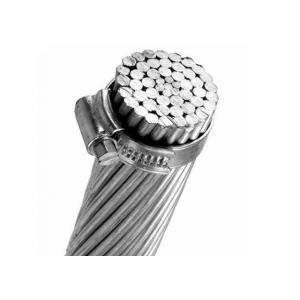

Add to Cart
795 336 ACSR Aluminium Conductor Steel Reinforced ASTM Standard
ACSR Aluminium Conductor Steel Reinforced is concentrically
stranded conductor with one or more layers of Aluminium wire
hard-drawn 1350-H16
on the galvanized steel wire core. The core may be single wire or
stranded depending on the size. Steel wire is available in Class A
or B galvanization as corrosion protection.
ACSR Aluminium Conductor Steel Reinforced is according to
electrical and mechanical strength requirements of transmission or
distribution cable, can provides an appropriate design combining
the quantity of Aluminium and galvanized steel wires.
| Code | Size (AWG/MCM) | Number of Strands(mm) | Weight(kg/km) | Rated Strength(kg) |
| Rose | 4 | 7*1.96 | 58.3 | 399 |
| Iris | 2 | 7*2.47 | 92.7 | 611 |
| Pansy | 1 | 7*2.78 | 117 | 740 |
| Poppy | 1/0 | 7*3.12 | 147.5 | 897 |
| Aster | 2/0 | 7*3.5 | 186 | 1375 |
Applications
Conductor(AAC and ACSR) have been widely used in power transmission
lines with various voltage levels,because they have such good
characteristics as simple structure,convenient installation and
maintenance,low cost large transmission capacity.And they are also
suitable for laying across rivers valleys and the places where
special geographical features exist.
Service Performance:
(1). The permissible long-time operating temperature for aerial
conductor is 70℃.
(2). Under the circumstance that rare climate is occurring and ice
coverage rate low in heavy ice area, the biggest stress of cable at
the lowest point of the sag should not exceed 60% of the short-time
destructive power.
(3). When connecting conductors, the conductor beside the
connecting tube cant be prominent. Otherwise, the force on the
operating conductors will be unbalanced. After connectors are
install, the connecting tube should be painted by moisture-proof
varnish in order to protect it from corrosion.
(4). Under installation, the arc downing stress of all the
conductors should be the same. With in the permissible distance of
crossing buildings or dropping to the ground, the stress can be
10-15% higher than regular stress.
